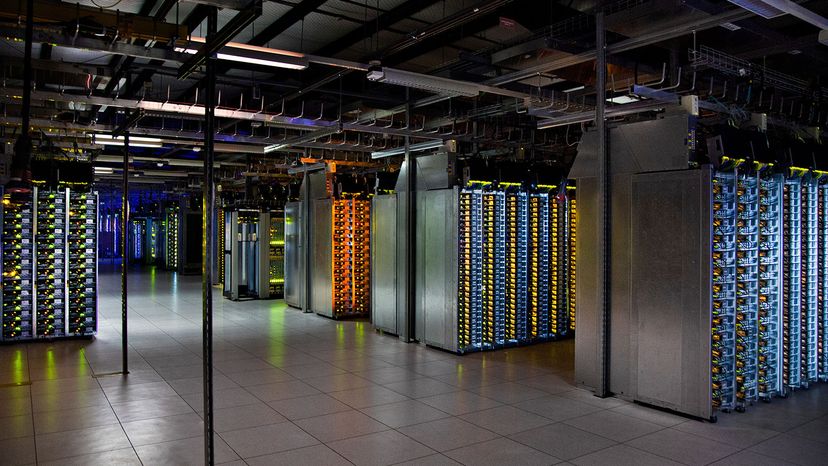Google Data Centers

Back in 1998, the equipment that ran Google was relatively modest. Co-founders Page and Brin used Stanford servers and other donated machines to run Google's search engine duties. The equipment at that time included:
- Two 300-megahertz (MHz) Dual Pentium II servers with 512 megabytes (MB) of memory
- A four-processor F50 IBM RS6000 computer with 512 MB of memory
- A dual-processor Sun Ultra II computer with 256 MB of memory
- Several hard drives (some of which were housed in a box covered in LEGO bricks) ranging from 4 to 9 gigabytes (GB) for a total of more than 350 GB of storage space [source: Pingdom]
Today, Google uses more than 2 million custom servers in more than a dozen data centers around the globe to make their products hum. Google's strategy is to design the servers without unnecessary hardware or software to limit potential problems and security vulnerabilities. The company distributes the data it stores over several servers in several centers, so that in the case of any potential breach or failure, the data — users' photos, videos, documents, etc. — is backed up in multiple locations. The sites also are physically protected — fences, guards and the like — 24 hours a day, seven days a week [source: Google].
Advertisement
Google uses servers for different tasks. Web servers receive and process user queries, sending the request on to the next appropriate server. Index servers store Google's indexes and search results. Document servers store search summaries, user information, Gmail and Google Docs files. Ad servers store the advertisements Google displays on search pages.